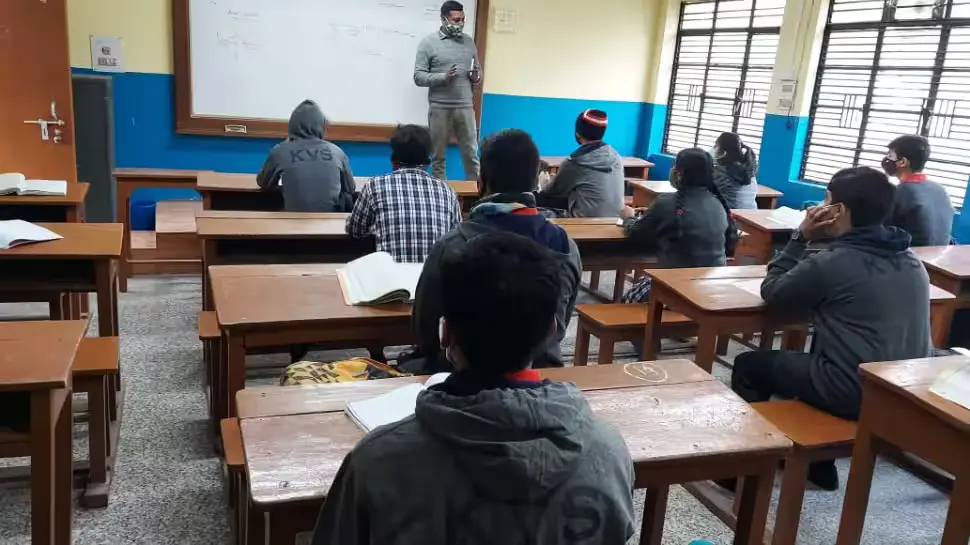ArdorComm Media News Network
July 30, 2025
Fresh admissions to Kendriya Vidyalayas (KVs) have dipped to a five-year low for the 2024–25 academic year, with only 1,39,660 new students enrolled, as per data presented by the Ministry of Education in the Lok Sabha. This marks a steady and concerning downward trend in both new enrolments and overall student numbers in India’s flagship network of centrally run schools.
A Downward Spiral in Enrolments
Responding to a question in Parliament, Union Education Minister Dharmendra Pradhan provided year-wise figures highlighting the consistent drop in KV enrolments. New admissions have declined from 1,95,081 in 2020–21 to 1,39,660 in 2024–25 — a fall of nearly 29%. Meanwhile, the total student strength across all KVs also saw a dip from 14,29,434 in 2021–22 to 13,50,518 in 2024–25.
| Academic Year | Fresh Enrolments | Total Student Strength |
| 2020–21 | 1,95,081 | 13,87,763 |
| 2021–22 | 1,82,846 | 14,29,434 |
| 2022–23 | 1,57,914 | 14,24,147 |
| 2023–24 | 1,75,386 | 13,89,560 |
| 2024–25 | 1,39,660 | 13,50,518 |
Though there was a temporary recovery in enrolments during 2023–24, the overall trajectory has remained downward, with this year witnessing the most significant fall in both fresh admissions and total enrolment figures.
Structural Strains in a National Network
Established to cater primarily to children of Central Government employees — particularly those in transferable jobs within Defence, Paramilitary Forces, PSUs, and autonomous institutions — the KV system currently operates 1,280 schools across India. However, challenges such as inadequate infrastructure, teacher shortages, and admission bottlenecks, especially in urban and semi-urban areas, are beginning to strain the system.
Expansion Despite Falling Numbers
Despite the declining enrolment trend, the Central Government approved the setting up of 85 new Kendriya Vidyalayas in December 2024, aimed at boosting capacity in the Civil and Defence sectors. Additionally, a KV in Shivamogga, Karnataka, is being expanded by adding two new sections per class.
The initiative carries a total budget of ₹5,872.08 crore — ₹2,862.71 crore allocated for capital projects (including construction) and ₹3,009.37 crore for recurring expenditures. However, actual implementation remains slow due to challenges such as:
- Delays in land transfer and legal ownership
- Approval processes for building designs and cost estimates
- Fund disbursal lags
- Administrative clearance delays at the local level
These procedural hurdles often stall the timely launch of new schools or the expansion of existing ones.
Decoding the Decline
Experts attribute the drop in admissions to several key factors:
- Overcrowding: Many KVs have hit their capacity limits, especially in cities, making it harder for new students to secure seats.
- Construction delays: Several approved schools are yet to become operational due to incomplete infrastructure.
- Emerging competition: An increase in affordable, private CBSE schools in smaller towns may be attracting families away from KVs.
- Policy ambiguities: Unclear guidelines in certain regions are adding to confusion over eligibility and admissions.
Rethinking the Road Ahead
While the government continues to emphasize the ongoing expansion of the KV network, the sharp drop in enrolment calls for an urgent review of operational and policy priorities. Education experts suggest the need for swift action to improve school infrastructure, accelerate construction timelines, digitize admissions, and invest in teacher training. With public demand for affordable, quality education still high, the future of Kendriya Vidyalayas may well depend on how effectively these systemic issues are addressed.
Source: TOI


